Llangloffan Fen/Corsydd Llangloffan National Nature Reserve, Fishguard, Pembrokeshire, South Wales
Below: The entrance to Corsydd Llangloffan
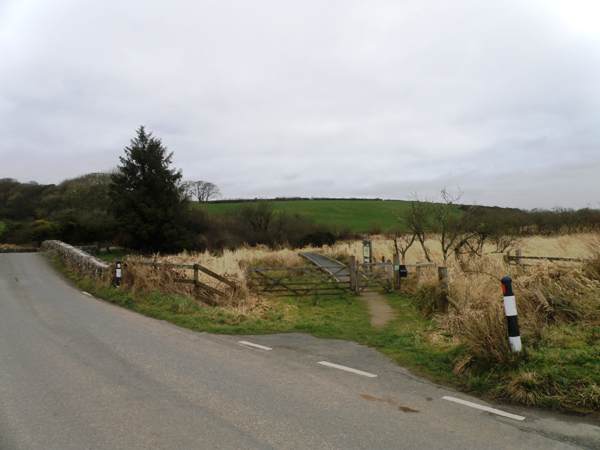
Designations: SSSI, Afonydd Cleddau Cleddau Rivers SAC
This NNR consists of the eastern part of the largest floodplain river-valley mire surviving in Pembrokeshire. The western part, also a nature reserve, is managed by the Wildlife Trust of South and West Wales.
The wide floodplain originally contained a river that drained westwards, but glacial deposits blocked the old river and diverted it in an easterly direction around 12,000 years ago. It is close to the source of the Western Cleddau River which, joined by the Eastern Cleddau River at Landshipping close to Haverfordwest, flows into the sea at Milford Haven.
The reserves are managed jointly by Natural Resources Wales (NRW), and the Wildlife Trust of South and West Wales.
Directions
Grid Ref: SM915316
Western Access: From Fishguard take the A487 towards St. David's.
At Mathry turn left onto the B4331 and continue towards Letterston for about 1km (2/3 mile) until you see a turning to the left into a small car park for the reserve.
Eastern (NNR) Access: Continue beyond the western access and turn left at the next crossroads, towards St. Nicholas.
The eastern access is about 0.5km (550yds) further down the road on the right-hand side, where there is a layby just before a small stone bridge.
Below: The boardwalk at Corsydd Llangloffan
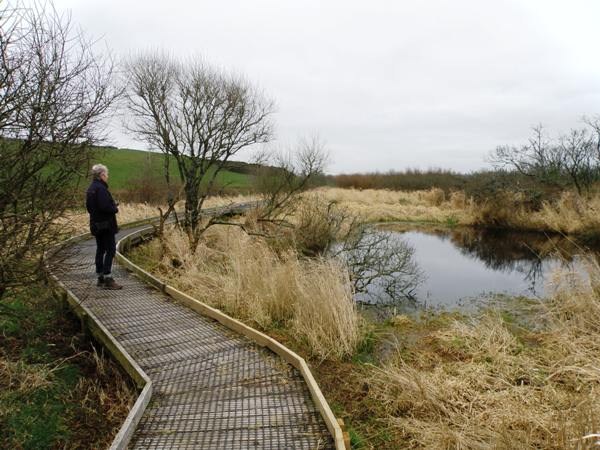
Access
At the NNR (Eastern Access) there is an excellent circular boardwalk suitable for wheelchair users and people with prams or pushchairs. The boardwalk runs from the entrance of the reserve. The ground on either side of the boardwalk is waterlogged and the vegetation often conceals ditches. Great care should be taken if you step off the boardwalk.
At the Western Access point there is a short boardwalk and a marked path that runs through part of the reserve. It is not suitable for wheelchair users or for people with prams or pushchairs.
Facilities
There are no facilites other than information boards inside the reserves.
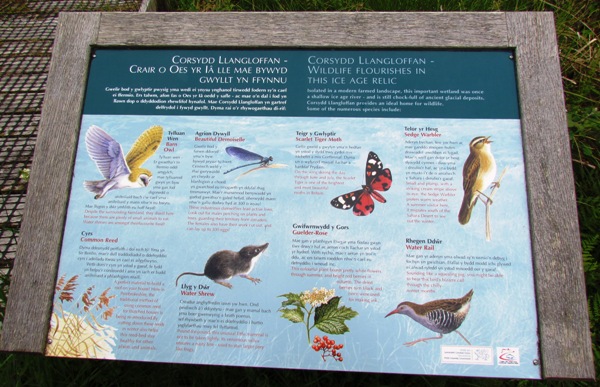
There are shops, pubs and a very famous Fish and Chip restaurant in Letterston if you feel you have burned up enough calories by running along the boardwalk before lunch!
Description of Site
These lovely nature reserves really come to life in the spring and summer, but they are still wild and peaceful places to walk in the winter, which is when we visited Llangloffan Fen for the first time.
The birdlife is very good here, and Corncrake Crex crex, Quail Coturnix coturnix, and Spotted Crake Porzana porzana have been recorded in recent years, along with more common winter-visiting species such as Snipe Gallinago gallinago, Water Rail Rallus aquaticus and numbers of waterfowl.
Below: The boardwalk runs through the woodland
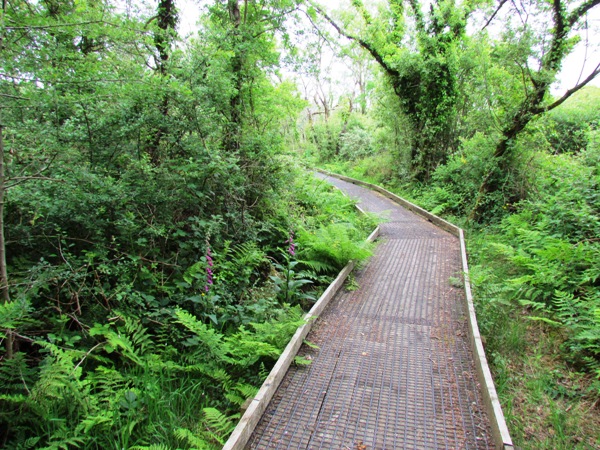
There are plenty of other birds, too, and some of them breed here: Sedge Warbler Acrocepholus schoenobaenus, Reed Warbler Arcocephalus scirpaeus, and Grasshopper Warblers Locustella naevia among them. In the evenings Barn Owls Tyto alba fly silently across the reserve in search of the many small mammals that make their homes here.
Otters Lutra lutra roam the reserve, and there are also Water Voles Arvicola terrestris, Polecats Mustela putorius, Badgers Meles meles and Water Shrews Neomys fodiens in and around the ponds and the small stream that runs through the Fens. Water Shrews are semi-aquatic and live in the margins of streams. They are extremely sensitive to water pollution, and so careful management of their habitats is required if they are to survive. Polecats are now restricted to parts of Wales and the border counties because of persecution by farmers and landowners. They resemble outsize dark-brown Stoats and are closely related to the domestic Ferret.
Below: Marsh Cinquefoil - one of our most beautiful wetlands wildflowers
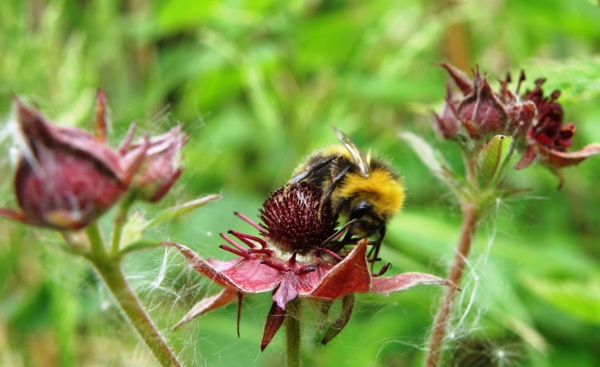
Both Greater Pond Sedge Carex riparia, and Greater Tussock Sedge Carex paniculata, both being typical fen plants, grow on the reserve along with Reed Canary Grass Phalaris arundinacea, and Common Reed Phragmites australis. Great Fen-sedge Cladium mariscus also puts in an appearance here in one of its only two known locations in the county. Notable among the many flowering plants are Meadowsweet Filipendula ulmaria, St John's-wort Hypericum spp., and Marsh Cinqufoil Comosum palustre.
The species for which the site is designated as SAC are to be found in the Western and Eastern Cleddau rivers. Both the Brook Lamprey Lampetra planeri and the River Lamprey Lampetra fluviatilis find good spawning habitat in the well-aerated sand and gravel of the river beds, while Bullheads Cottus gobio are widespread throughout the catchment.
Red Data Book invertebrate species are recorded from Llangloffan Fen, as are various reptiles and amphibians.